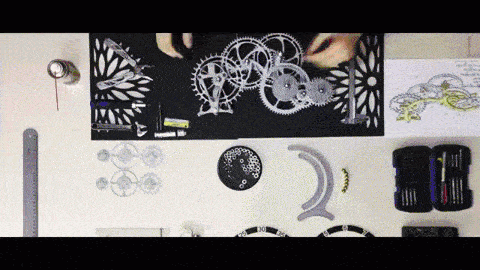This beauty was designed, crafted and assembled by Matt Olczyk. The custom-made clock looks like a cross between old pendulum antiques and modern, minimalist designs. All the parts were custom-made in Olczyk’s shop using CNC milling, laser cutting and 3D-printing. The real innovation, however, lied in the fat that all of these operations were performed by one single machine – the ZMorph Hybrid 3D printer.
ZME Science has written extensively on 3D printing, touting its various benefits. Now that they’ve become so cheap (in the hundreds of dollars range), a lot of people have jumped in and help initiate a new manufacturing revolution: one founded in millions of garages across the world.
Yet, 3D printing isn’t a fix it all technology. It works great for cheap, small to medium-sized parts, and has the added advantage that you can use it to craft complex shapes, all in one piece. Sometimes, however, milling a part is better if you’re looking for something sturdier.
”Sometimes 3D printing is not enough. Additive manufacturing disrupted the scene, but in a vast number of cases, subtractive methods are still the way to go. Like all technologies, 3D printing has its limitations, stemming from the very foundation of how 3D printing works.For some designers and engineers this technology still falls short of results of other rapid prototyping or fabrication methods they are used to, naming injection molding, or CNC milling as some examples. And the arguments are strong – limited materials, hence limited mechanical and aesthetical properties and in some cases even cost efficiency of production. And when 3D printing is not enough, the obvious choice is to reach for a different technology,” ZMorph said in a statement.
For his clock, Olczyk used only the ZMorph Hybrid 3D printer to perform multiple machine operations. He just swapped the tool heads to perform various operations.
Big gears were made using CNC milling. Smaller gears and other objects were 3D printed from plastic. Finally, the laser cutter head was used to cut the clock’s numbers from black adhesive foil. The whole process can be seen below.





